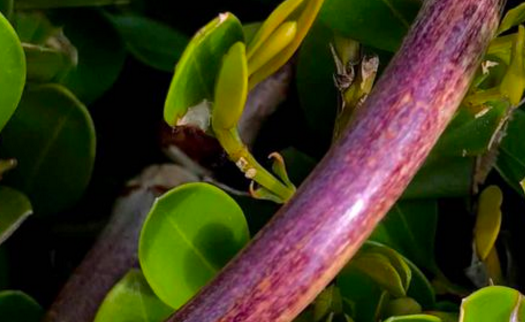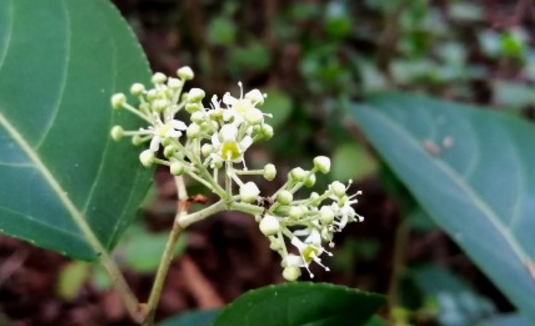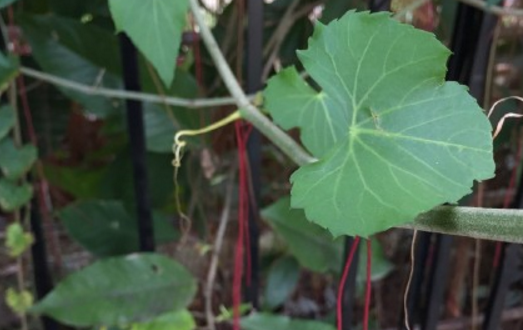Dicotyledonous plant class spatholobus breeding methods and precautions? How to reproduce? What's a flowery phrase?
Chicken blood vine likes a warm, sunny environment, but also can withstand shade, so the breeding methods and points for attention of chicken blood vine? How do you breed? What is fancy language? It is understood that the chicken blood vine in the growth process, the requirements of light is not strict, it is a light-loving plant, but can also be shade-tolerant. In terms of temperature, the suitable temperature for its growth is between 20 and 30 ℃, and it is not cold-resistant, so when the temperature is too low in winter, you can put it in a greenhouse or indoors for the winter.

First, the breeding methods and matters needing attention of chicken blood vine?
Light and temperature
Chicken blood vine in the growth process, the requirements of light is not strict, it is a light-loving plant, but can also be shade-tolerant. In terms of temperature, the suitable temperature for its growth is between 20 and 30 ℃, and it is not cold-resistant, so when the temperature is too low in winter, you can put it in a greenhouse or indoors for the winter.
Watering and fertilizing
Chicken blood vine does not have high requirements for water and fertilizer, during the growing period, fertilizer can be applied every half a month, preferably thin fertilizer. After fertilizing, you can pour some water to avoid fertilizer damage. The growth of chicken blood vine is the most exuberant from July to August, and it can be applied with fertilizer.
Soil
Chicken blood vine does not have a high demand for soil, fertile soil is the best, but it can also tolerate barren. If potted, the soil had better be loose, fertile, well-drained mountain soil or rotten leaf soil.
Reproduction method
The propagation of Uncaria angustifolia is usually by means of sowing propagation, branch propagation and cutting propagation, and the way of cutting propagation is more convenient.
Note:
Diseases and insect pests
Chicken blood vine is prone to root rot in the rainy season and can be treated with carbendazim. Sometimes, there will be small land tiger, beetle larva harm, they will bite chicken blood vine, affecting the normal growth of chicken blood vine. It can be prevented and treated with drugs. You can also use special insecticides to kill insects, or make your own insecticides to kill insects.
Set up a frame
Basically, the chicken blood vine can grow and form its own beautiful scenery, but it can also set up a flower rack according to its own preferences and let the chicken blood vine grow with the flower rack.
Overwintering
In winter, the chicken blood vine needs to be safe through the winter, it can be put indoors or in the greenhouse, if it can not be moved, it is necessary to take measures to prevent the cold. You can build a cold shelter or cover it with straw to make the chicken blood vine safely through the winter.
Second, how to reproduce?
1. Sowing and reproduction
The sowing and propagation of Uncaria angustifolia is relatively simple, but it needs a certain cycle.
Chicken blood vine is the fruit ripening stage in September, when the fruit begins to mature, it is necessary to harvest seeds in time. The seeds collected are dried in the sun, then sealed and stored, and sown and propagated in the spring of the following year.
The specific way of sowing is the same as that of other plants, but it should be noted that before sowing, the seeds need to be germinated and soaked, and only when they appear white can they be sowed.
2. Cuttage propagation
The sowing and propagation of Uncaria angustifolia needs a long period from sowing to plant maturation, so it is convenient and simple to adopt the method of cutting when it is propagating.
Before cutting propagation, we need to do the preparatory work, mainly to prepare the cutting substrate and cutting. First of all, clean up a seedbed, the soil is loose, fertile is better, to disinfect the soil, kill the eggs or bacteria that may exist in the soil, but also can add some base fertilizer to ensure the growth of chicken blood vine has enough nutrients.
When you are ready for the seedbed, you should be prepared to insert Christine. Choose the 1-to 2-year-old lignified branches that are stout, healthy and pest-free, cut off the length of the 15cm, remove the leaves and trim again, the root of the cuttings can be trimmed into oblique, easy to distinguish between the head and tail.
Soak the cuttings in the rooting agent to facilitate rooting. After taking out and drying, insert it obliquely into the soil and pour water into the seedbed once. It usually takes half a month to take root. When the cuttings of the chicken blood vine begin to grow, with reasonable watering and fertilization, it will be able to grow healthily.
Third, what is Hua Yu?
The flower language of chicken blood vine is chastity and nobility. Beautiful chicken blood vine, always open a large bunch, blooming incomparable. When it crawls all over the flower rack, it brings people not only the enjoyment of beauty, but also the exclamation of beauty.
Time: 2019-03-16 Click:
- Prev

Which variety is better to make bonsai without disease? How do you trim it? How do you breed?
Wei Mao likes light, but also slightly resistant to shade; it has strong adaptability to climate and soil, so which variety is better for bonsai? How do you trim it? How do you breed? According to the data, Wei Spear likes the light better, but it can't be said that it is not shady. The adaptability of Euonymus to soil is relatively strong.
- Next

How does grape family brocade screen vine raise in winter? Can I keep it at home? What's the use?
Jinping vine Xiyang plant, drought-resistant, heat-resistant, but also slightly shade-resistant, drainage, sunshine must be good, so how to raise Jinping vine in winter? Can I keep it at home? What's the use? It is understood that when planting Jinping vine, it is better to choose a soil with water retention but not stagnant water. The soil should have a little fertility.
Related
- Fuxing push coffee new agricultural production and marketing class: lack of small-scale processing plants
- Jujube rice field leisure farm deep ploughing Yilan for five years to create a space for organic food and play
- Nongyu Farm-A trial of organic papaya for brave women with advanced technology
- Four points for attention in the prevention and control of diseases and insect pests of edible fungi
- How to add nutrient solution to Edible Fungi
- Is there any good way to control edible fungus mites?
- Open Inoculation Technology of Edible Fungi
- Is there any clever way to use fertilizer for edible fungus in winter?
- What agents are used to kill the pathogens of edible fungi in the mushroom shed?
- Rapid drying of Edible Fungi

